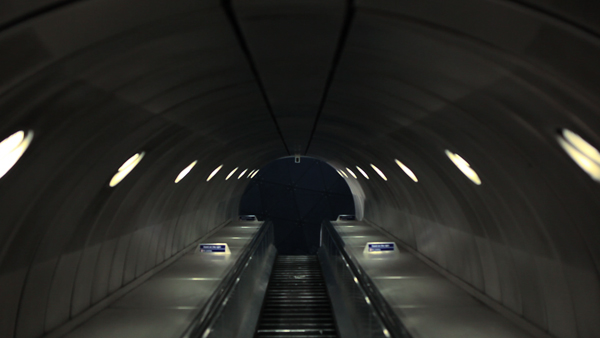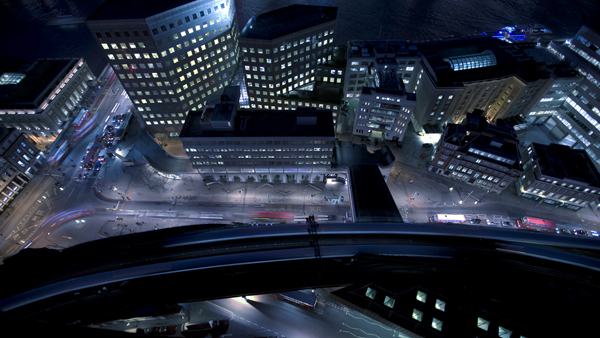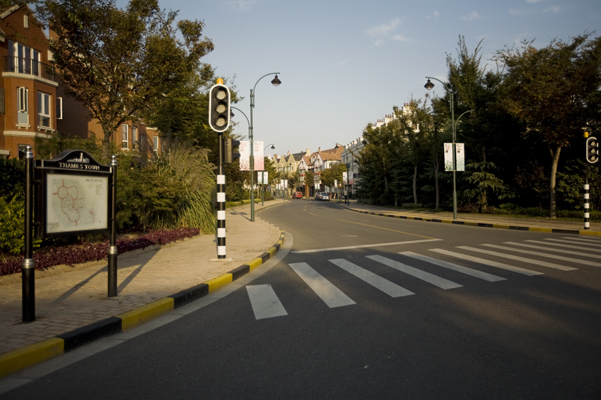Studio Output is a graphic design company who work in London and Nottingham. They have worked with BBC and Sony on various projects, and have been described as one of the best studios in the world. they describe their personal strengths as being; Brand identity, integrated marketing campaigns, digital and online, social media and mobile, design for print, interiors and motion graphics. "The result is beautiful work that is always effective, relevant and fresh, bringing genuine credibility to our client's message."
The majority of the work created is graphic design based, and is created using various computer programmes. I really admire their work for this reason, as they have to create the whole image from scratch, which I find more difficult than photographs where you can have a subject to base a photo on, whereas a graphic design can be anything. They're designs are creative, sophisticated and professional, which is why they have such impressive clients.
Bethan Pitt
Thursday, 2 June 2011
Ali Lomas
Ali Lomas is a portrait and fashion photographer from Burton on Trent who went to Loughborough University. She has made a name for herself by featuring in many issues of 'Elle' magazine and by having her work exhibited in the National Portrait Gallery. She tries to create a balance between fine art and fashion within all of her work. She shoots the vast majority of her shots landscape, which is quite unique for a portrait photography and I think it makes the shots more interesting and focus on the location as well as the model.
I'm in two-minds about Ali Lomas' work. Some of her work I find really beautiful, and then I see something else which seems rather amateur in the use of composition and lighting. I don't know whether that's just her experimental work or just if I'm being too critical. With some images, I struggle to understand if there's meant to be meaning behind it and if so what that meaning is. I like her uses of location and the experimental poses she gives her models to use their bodies to enhance the image.
Jill Cole
 Jill Cole is a documentary and fine art photographer who has very unique concepts and ideas to base her projects around. Her most unique idea that really fascinated and shocked me was a series she photographed a bird struggling for freedom inside a bag. These photos are on military ground, who keep these birds for conservation and scientific research, and one of her most striking and beautiful photos is of one of the birds in this enclosure trapped by a fine netting.
Jill Cole is a documentary and fine art photographer who has very unique concepts and ideas to base her projects around. Her most unique idea that really fascinated and shocked me was a series she photographed a bird struggling for freedom inside a bag. These photos are on military ground, who keep these birds for conservation and scientific research, and one of her most striking and beautiful photos is of one of the birds in this enclosure trapped by a fine netting.
I also found her project on guns incredibly interesting. She focuses on the idea of how the UK prides itself on being a gun-less society, but yet has guns so much in the media and they are still seen as objects of desire. I thought this was a really interesting idea and the shots taken are really clever.
Suki Chan
Suki Chan is a japanese artist who uses mixed media processes to create her art. She has had her work exhibited internationally, normally presenting it as installations or as videos. Her work is incredibly abstract and contains a lot of symbolism, mostly with times and places.
In her piece 'Sleep walk, Sleep talk' she focuses on the busy London enviroment and uses symbolism to portray the individual escape of repetitive habits and the freedom of expression. The video mostly consists of watching trains and cars speed by creating light-trails in the night, and following the paths of individual people. She created this video using time-lapse photography. Time-lapse photography is a technique used in cinematography which makes the frames-per-second much lower than it would normally be, making the video created appear to be much quicker than it would normally be, and creates a sort of stop-motion effect to the video. I really like this technique as it creates a really surreal and abstract effect.
Also her project 'A Place on Earth' focuses more on the photography side of her work, where she has taken photos of a village in China that is eerily empty due to no-one buying the new historical buildings in the area. I love the eery and lonely feel to these images which make you feel like you are there yourself and all alone, it's as if you can feel the silence.
I have to admit I really don't like Suki Chan's work. I really struggle to understand the concepts behind most of it, and I think it's too abstract for my tastes, although I do really admire her experimental nature and her use of mixed media.
Friday, 28 January 2011
Rut Blees Luxemburg
Rut Blees Luxemburg is a German fine art photographer who only works using film. When she came for a talk at Burton college she was mostly just showing her photos and explaining her reasons behind it and how she took the photo. She showed all her street photography and showed the photos on slides rather than projection as she insisted the quality was better for film with the slides.
She mostly takes photos of landscapes and cities and finding art within the city. She took a lot of photos of chewing gum on the floor to try to take something ugly and turn it into something beautiful. She also took photos on 'vertigo' and finding high points to take photos straight down to feel the speed and excitement in being high and having the sensation of falling.
She also took photos of council estates which was later used as an album cover for the band 'The Streets'. She went on to explain how she found this interesting to see how art can exist in different levels, so not just in exhibitions, on albums, on posters and what different audiences will see the art through the different levels.
She also took a lot of photos of reflections in puddles on the floor. As amazing as I find this as an image, I felt that she took too many shots of just puddles as they all look too similar which makes them dull as a series rather than the effect it makes as an individual image.
She mostly takes photos of landscapes and cities and finding art within the city. She took a lot of photos of chewing gum on the floor to try to take something ugly and turn it into something beautiful. She also took photos on 'vertigo' and finding high points to take photos straight down to feel the speed and excitement in being high and having the sensation of falling.
She also took photos of council estates which was later used as an album cover for the band 'The Streets'. She went on to explain how she found this interesting to see how art can exist in different levels, so not just in exhibitions, on albums, on posters and what different audiences will see the art through the different levels.
She also took a lot of photos of reflections in puddles on the floor. As amazing as I find this as an image, I felt that she took too many shots of just puddles as they all look too similar which makes them dull as a series rather than the effect it makes as an individual image.
Julian Germain
Julian Germain is a photographer who came for a talk at college and spoke mostly about his various projects he has done throughout his career.
Early in his career he only used black and white photography as he was inspired by monochrome photography of the early 20th century such as Henri Cartier-Bresson. He then moved onto colour photography and never worked with black and white again as he thought colour was better for portraying the world as the world is in colour. He was also telling us how he likes to present his work in books, and books are a good investment because it's buying lots of art at a very cheap price, so he tries to use photobooks as much as possible.
He went onto tell us about his first project where he spent 18 months working with single parents and families in poverty and developing a relationship with them so that he could take photos of them and of their home. While working with a family he discovered a single mother or was working as a prostitute, so this led onto a project based on prostitution. While talking about these project he highlighted the importance of researching your surroundings of where you work, and of meeting new people and hearing their stories, as it's easier to get by in a new area if you have people to direct you and invite you into their world.
He then told us about a project of taking photos of the same old man called George for 8 years. He went to visit him quite often, not always taking photos, but when he did he took photos of George, his house and places they went together. The next project he told us about was a collection of family snapshots he'd collected from various families over many years and put into one book, like a family album but of lots of different people. He said he found it interesting what was saved if people's memories and showing the age with the faded colours and where some of the photos had torn. From discovering other people's photos, he started a project of working with street children and giving them cameras to take photos of whatever they wanted. He was incredibly impressed with the results as they had no training at all and found it difficult to understand as they were mostly stoned. This then led on to public galleries to help give the kids motivation and raise awareness to their potential.
.jpg)
The next project he told us about where of various elderly people, which led to taking a photo of a century. He took photos of a person who was born in every year of the century. I found this project particularly interesting to see the century through the people that have lived it, and also the link this had to the project on showing different generations on the same family.

He finished by talking about how he is an editor at Useful Photography magazine which explores the different aspects of photography and it's uses, such as photos for missing people.
Early in his career he only used black and white photography as he was inspired by monochrome photography of the early 20th century such as Henri Cartier-Bresson. He then moved onto colour photography and never worked with black and white again as he thought colour was better for portraying the world as the world is in colour. He was also telling us how he likes to present his work in books, and books are a good investment because it's buying lots of art at a very cheap price, so he tries to use photobooks as much as possible.
He went onto tell us about his first project where he spent 18 months working with single parents and families in poverty and developing a relationship with them so that he could take photos of them and of their home. While working with a family he discovered a single mother or was working as a prostitute, so this led onto a project based on prostitution. While talking about these project he highlighted the importance of researching your surroundings of where you work, and of meeting new people and hearing their stories, as it's easier to get by in a new area if you have people to direct you and invite you into their world.
He then told us about a project of taking photos of the same old man called George for 8 years. He went to visit him quite often, not always taking photos, but when he did he took photos of George, his house and places they went together. The next project he told us about was a collection of family snapshots he'd collected from various families over many years and put into one book, like a family album but of lots of different people. He said he found it interesting what was saved if people's memories and showing the age with the faded colours and where some of the photos had torn. From discovering other people's photos, he started a project of working with street children and giving them cameras to take photos of whatever they wanted. He was incredibly impressed with the results as they had no training at all and found it difficult to understand as they were mostly stoned. This then led on to public galleries to help give the kids motivation and raise awareness to their potential.
.jpg)
The next project he told us about where of various elderly people, which led to taking a photo of a century. He took photos of a person who was born in every year of the century. I found this project particularly interesting to see the century through the people that have lived it, and also the link this had to the project on showing different generations on the same family.

He finished by talking about how he is an editor at Useful Photography magazine which explores the different aspects of photography and it's uses, such as photos for missing people.
I found his talk and work very interesting, but I wish the information was more summarised rather than talking about all his work in the last 20 years as I found it difficult to focus on it all and it was hard to concentrate for so long. Two hours for a lecture on all his projects I think was too long to concentrate properly throughout.
Daniel Stier
During Daniel Stier's lecture, I always struggled to gain interest in his work, as I found all the work that he showed us appeared to be incredibly dull to me. With his work, he has a focus on the simplicity within his work, which I can admire, but I struggle to get interested in it.


The first project he showed us was based on supermarkets and marketting. This consists of a series of general household products and foods that he's photographed, sometimes with a special offer on the products. I don't really understand the meaning behind these images, it might have something to do with simple marketing and the way things are presented to us, but I didn't really get it.


The final project that he told us about I found the most interesting, where he has taken a series of photos of people who are immigrants living in the UK, and got them to wear clothes stereotypical native to their countries. I thought this was an interesting project to show the diversity of cultures in our country and I like the natural way the photos were shot.
He finished by showing us a few commercial portraits that he's done in the past. I liked the interesting choices of location in his images, but didn't find anything particarly striking about the actual portraits. They seemed very natural which I liked, but at times I thought the composition looked a bit lazy, and the image only really seemed interesting because of the person in it.
Subscribe to:
Comments (Atom)



















.jpg)


